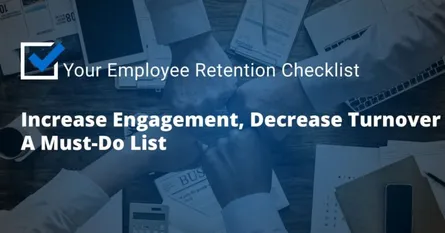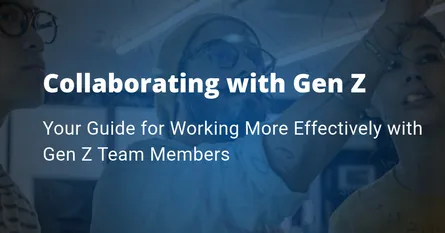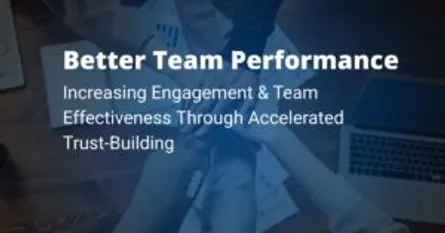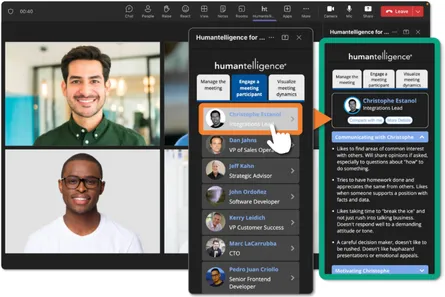
15 Benefits of Collaboration in the Workplace + 3 Tips to Improve it
- Admin
- Collaboration
- 02 Jan, 2025
Many businesses are supported by distributed teams spread across different states or even around the world. According to a study conducted by the Institute for Corporate Productivity and Rob Cross, the Edward A. Madden Professor of Global Business at Babson College, high-performance organizations are up to 5.5x more likely than lower-performers to incentivize individual, team, and leader effectiveness in collaboration. The study of more than 1,100 companies—two-thirds of which include collaboration as a stated organizational value—found that the difference between productive and unproductive collaboration can be summed up in one word: purpose.
Ask anyone to make a list of what makes companies successful, and collaboration is definitely going to be near or at the top. When you’ve got a mix of minds and talents working in harmony, you can unlock all the top achievements for innovation, efficiency, and employee satisfaction. It’s the purposeful pursuit of collaboration that is the primary reason high-performance organizations can leverage collaboration to achieve desired business outcomes. Effective collaboration results from an effective company culture that is supported by management and embraces the entire organization.
Truthfully, we should not have to make a case for the benefits of collaboration, because anyone who has ever worked with a really great team knows exactly how powerful that is.
Still, it never hurts to have a refresher or a few tips to reset your approach your collaboration in the workplace. So let’s dive into all the ways great teamwork spells success for everyone at your company.
What is Employee Collaboration?
First, what is collaboration? Employee collaboration is what happens when people in your organization work successfully together to achieve your specific goals and objectives. It’s that special magic that comes from getting everyone rowing their oars in the same direction. The sum ends up equaling a lot more than the parts when you have the joint efforts of all team members, leveraging their diverse skills, knowledge, and resources to solve problems, create innovative solutions, or improve processes.
Effective collaboration requires a few starting ingredients:
- Communication: Clear and open lines of communication are essential, allowing for the seamless exchange of ideas and information.
- Trust and Respect: Successful collaboration requires trust among team members, fostering a safe environment where ideas can be shared openly without fear of judgment.
- Shared Goals: Collaboration is most effective when all participants are aligned on objectives and understand their roles in achieving these goals.
- Technology and Tools: Modern workplaces are often distributed and need to utilize digital tools and platforms to facilitate collaboration, especially in environments where team members are geographically dispersed.
- Cultural Encouragement: Organizational and team dynamics play a significant role, as they should enable collaboration by recognizing and rewarding cooperative efforts.
In a nutshell, employee collaboration is about harnessing the collective intelligence, problem solving, creativity, and energy of your team to drive organizational success and innovation.
20 Benefits of Collaboration
Curious about what effective collaboration really brings to the table? Let’s jump into the benefits of collaboration. The list below shows pretty clearly why getting your team to work together will be fundamental to completing your mission.
1. Enhanced Innovation
When* brains storm *well together, thinking gets better. Collaboration turns regular meetings into new idea-fests. That’s because people feel safer in putting their ideas forward and building more innovative practices through team collaboration.
2. Increased Efficiency
Two heads are better than one! Collaborative teams are able to work faster — putting the right people on the right tasks and streamlining processes. Not sure who to put on what project and in what role? That’s were technology comes in.
3. Improved Employee Satisfaction
Working together doesn’t just get the work done — it also makes the job fun! When employees are able to collaborate, they build relationships and enjoy a sense of shared achievement that makes every workday feel like a win.
4. Faster Problem-Solving
When challenges pop up, collaborative teams are the best at pulling together and pushing forward. Used to building off of one another’s ideas, they can better clear blockers and land on solutions that solo players might miss.
5. Balanced Workloads
Many hands make lighter work, as the saying goes. Collaboration allows team members to distribute tasks based on everyone’s preference, expertise, and capacity, preventing burnout and keeping spirits high.
6. A Collaborative Learning Environment
Every collaborative project becomes a mini-classroom of a sort. Team members who collaborate well form a natural learning cohort that can encourage one another on shared learning journeys. Think of it as an informal mentoring program.
7. Cross-Skilling Opportunities
Collaborate today, learn new skills for tomorrow! Working alongside diverse talents also lets employees pick up new skills and competencies directly from one another, turning everyday tasks into learning opportunities.
8. Stronger Decision Making
When decisions are made through collaboration, they’re also built on a foundation of many diverse perspectives and experiences. This means decisions are not only stronger but also fairer, reflecting the wisdom of the crowd.
9. Higher Flexibility and Scalability
Collaborative teams are more resilient — stretching to match the task at hand in a way that is both flexible and scalable. This is important because grit and adaptability is a game-changer in facing disruption — which is getting more and more common.
10. Boosted Creativity
Collaboration is creativity’s best friend. It pushes employees to think outside the box and paint outside the lines, leading to solutions and ideas that are as creative as they are effective.
11. Enhanced Communication Skills
Regular collaboration turns shy folks into communication pros. It encourages clear and frequent interactions that refine everyone’s ability to express ideas and listen actively.
12. Fewer Workplace Conflicts
When collaboration is a core part of your culture, conflicts tend to take a backseat. Regular interaction and mutual goals help to reduce misunderstandings and build bridges over troubled waters.
13. Deeper Friendship, Trust, and Transparency
Trust doesn’t just happen; it’s built through many acts of connection and collaboration. When teams work closely and well, transparency becomes the norm, and trust and friendship flourish.
14. Positive Dynamics
Collaboration is one of your best ways to create a positive employee experience. A collaborative environment is the soil where a great company culture grows. It nurtures an ecosystem where support, teamwork, and mutual respect flourish.
15. Enhanced Adaptability
Collaborative teams shine because they are able to adapt more quickly — moving around obstacles and reshaping themselves to fit new challenges.
3 Tips to Improve Collaboration and Connection
1. Leverage technology to boost human connections.
Technology isn’t just a left-brained tool. Sure, it’s good for metrics and mechanics — but it’s also an amazing channel through which you can connect people on a deeper level and facilitate relationships. Use tools that build self-awareness, connection with others, and see how collaboration flourishes naturally.
2. Foster mutual support among employees.
A supportive culture will get your new hires up to speed quickly, and it can also make everyone work better together! When everyone feels empowered to offer support, you’re cultivating a culture where meaningful micro-interactions flourish and employees feel good about sharing knowledge as a default. This sort of open give-and-take is rich soil for teamwork and will help you reap the benefits of collaboration.
3. Empower employees to shape their own connections.
When employees are able to steer their own collaborative experiences, they will feel a deeper sense of belonging and mastery. Technologies that enhance decision-making and bring team members closer can also be used to help employees connect and collaborate — sharing knowledge and skills. By empowering people to connect with colleagues on a personal level you will see the benefits of collaboration soar.
Bonus Tips!
- Encourage active listening in teams. Part of the challenge in facilitating effective workplace collaboration is balancing discussions among different team members. This can be particularly difficult when dealing with different cultures, personalities, and challenging topics. Helping employees, and especially managers, develop their active listening skills can help everyone feel heard and more involved.
- Organize next steps and feedback. When employees collaborate to develop a new strategy or review an important document, they can share ideas in a number of different ways. After the work of brainstorming and sharing is done – i.e. the meeting – set clear expectations for processing the notes and feedback to avoid creating a backlog of partially developed ideas that go nowhere. Asynchronous collaboration tools are an essential asset but need to be well-managed to get the most value out of the communications, and importantly, move the project along.
On a final note, don’t underestimate the benefits of informal collaboration. You can certainly accomplish a lot in meetings and formally organized work activities, but a lot of the real work gets done between employees themselves. Whatever you can do to make it easy for your team members to get together or communicate more effectively not only helps improve collaboration, but also will allow many of them to forge long-term or even lifelong relationships.

























-Low-Quality.DNBpXyLx_1VXSiM.webp)
.CiqwvMOO_A63sY.webp)





-Medium-Quality.ZFp5mEuF_Z13ebXJ.webp)


